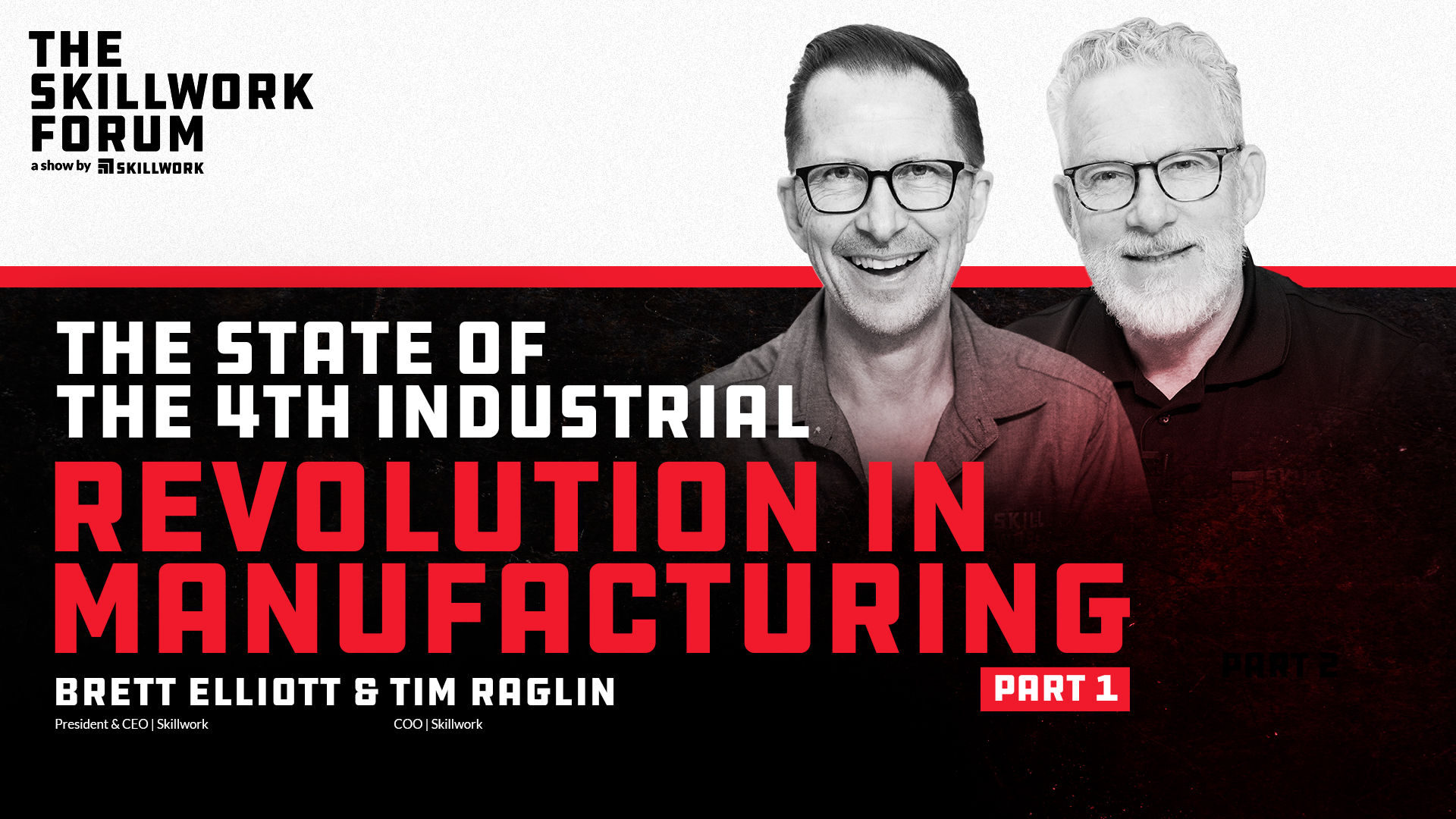The State of the 4th Industrial Revolution in Manufacturing [Part 2]

If you desire you can listen this episode on Spotify.
Let’s quickly recap the two studies we’re discussing in part 1 and part 2 of this conversation on smart manufacturing industry and the Fourth Industrial Revolution (4 IR).
Rockwell Automation surveyed over 1,300 global respondents in its white paper, The State of Smart Manufacturing. A second paper by L2L titled The State of Digital Transformation in Manufacturing came out around the same time which surveyed senior leaders in the manufacturing industry.
Both papers provided a lot of salient data, statistics, and trending information about the future of smart manufacturing. This two-part podcast aims to share highlights from these reports and glean actionable insights from them.
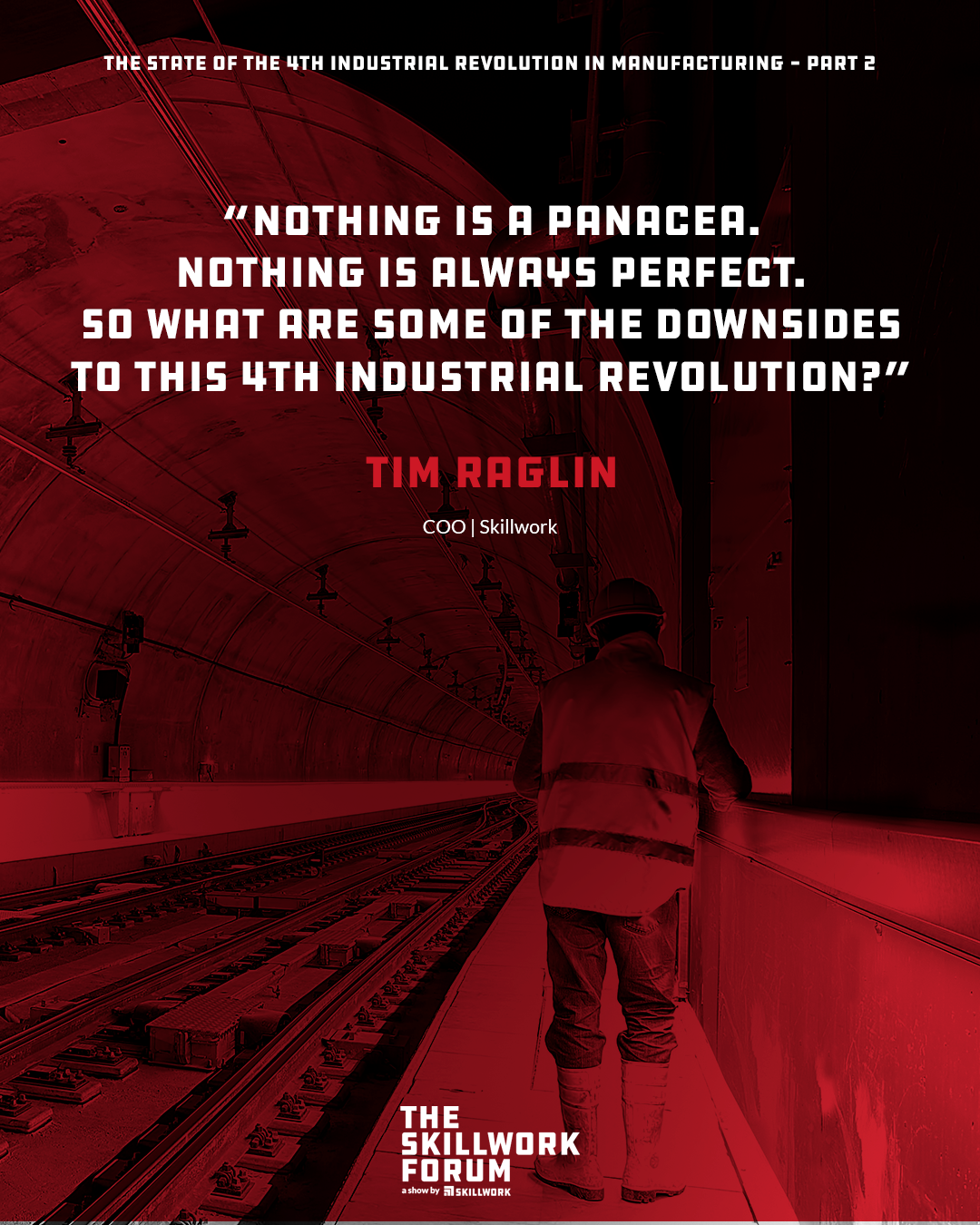
Big Data: The Downside of Industry 4.0 Manufacturing
The Industry 4.0 definition, in our context, is the digitization of the manufacturing sector. With this digital transformation comes the need for upskilling workers to equip them for the future of work. Industry 4.0 technologies exist to improve efficiencies, but there are downsides.
All of this technology is an overload of data.
In these studies, an increasing number of companies, like 40% year over year, felt they lacked the ability to use data in a meaningful way. This has led to Rockwell coining the term technology paralysis. Companies become overwhelmed with all the data they’re collecting and simply don't know what to do with it, so they don't do anything.
One of the things driving automation is the fear of what the competition is doing. However, 40% of manufacturers also say they lack the ability to use the data to make decisions that help them outpace their competition.
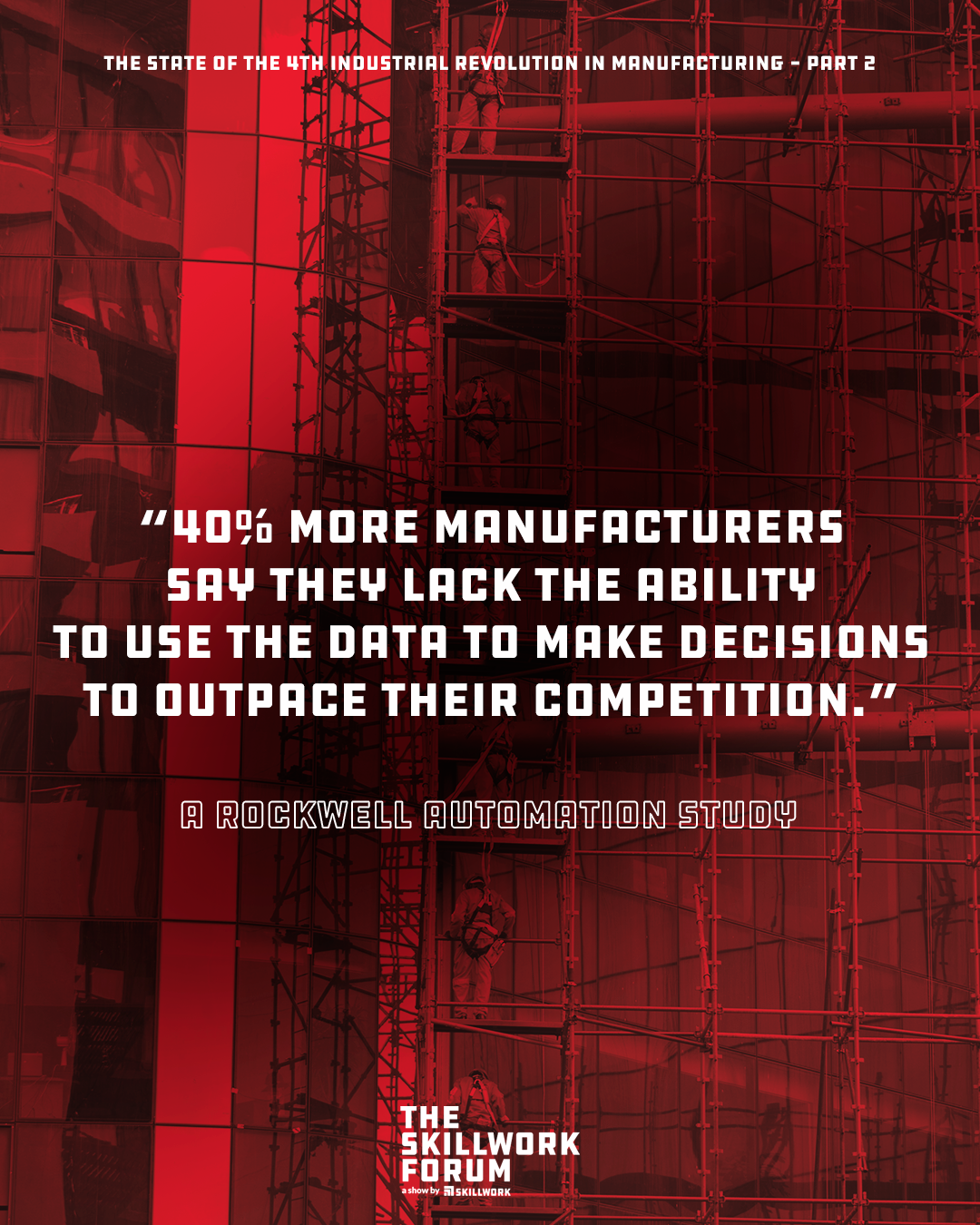
Many manufacturers suffer from this fear of missing out (FOMO). You see your competitors, fear their success, and decide you need a shiny new object, too. But it won't be effective without technology road mapping.
“It's common for people to invest time and money into technologies without understanding that digital transformation is as much or more about business process improvements than it is about implementing new tools. Without the right strategy, it gets stuck.” – Eric Whitley, Director of L2L Smart Manufacturing.
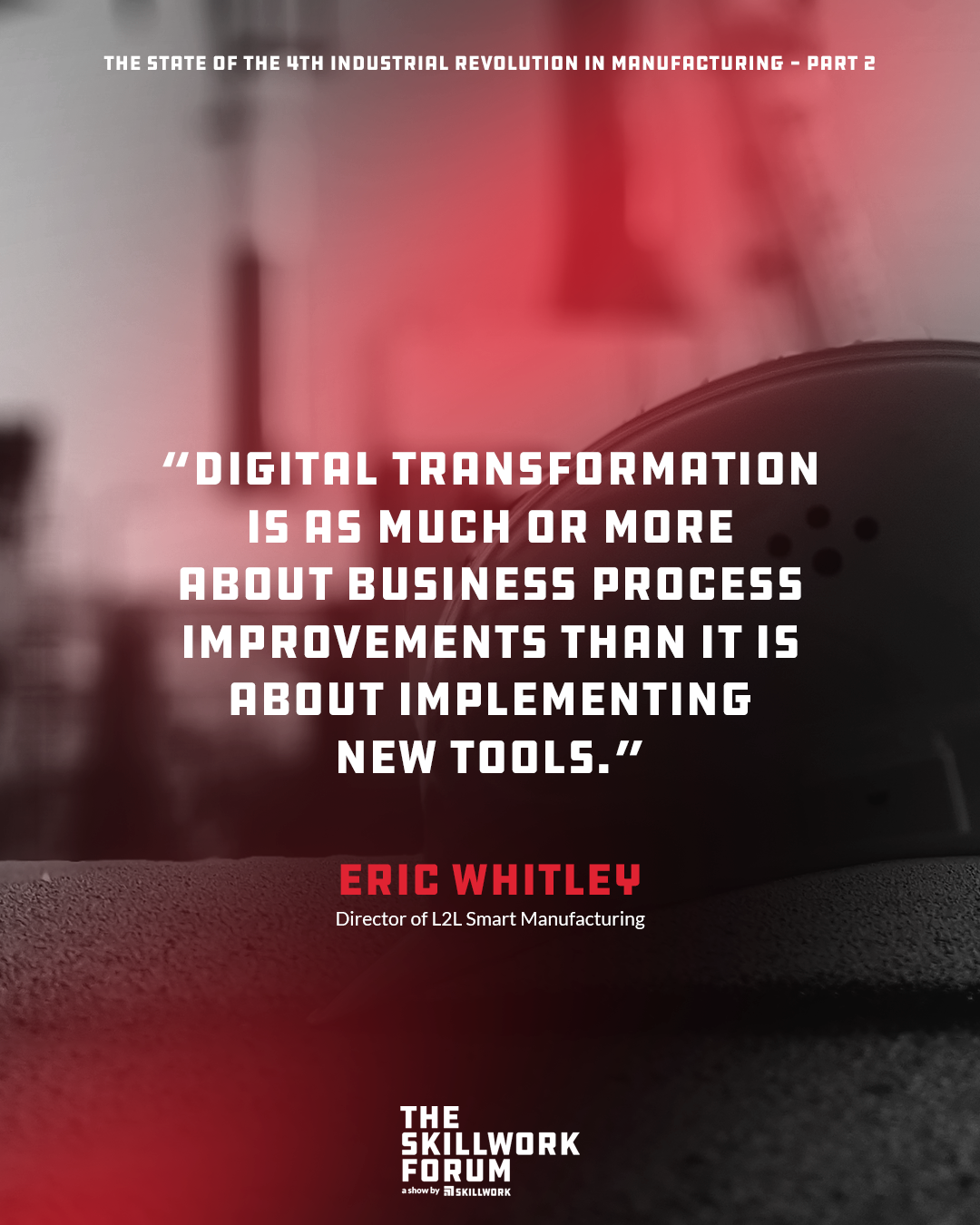
In short, new technology in manufacturing without a purpose is useless. 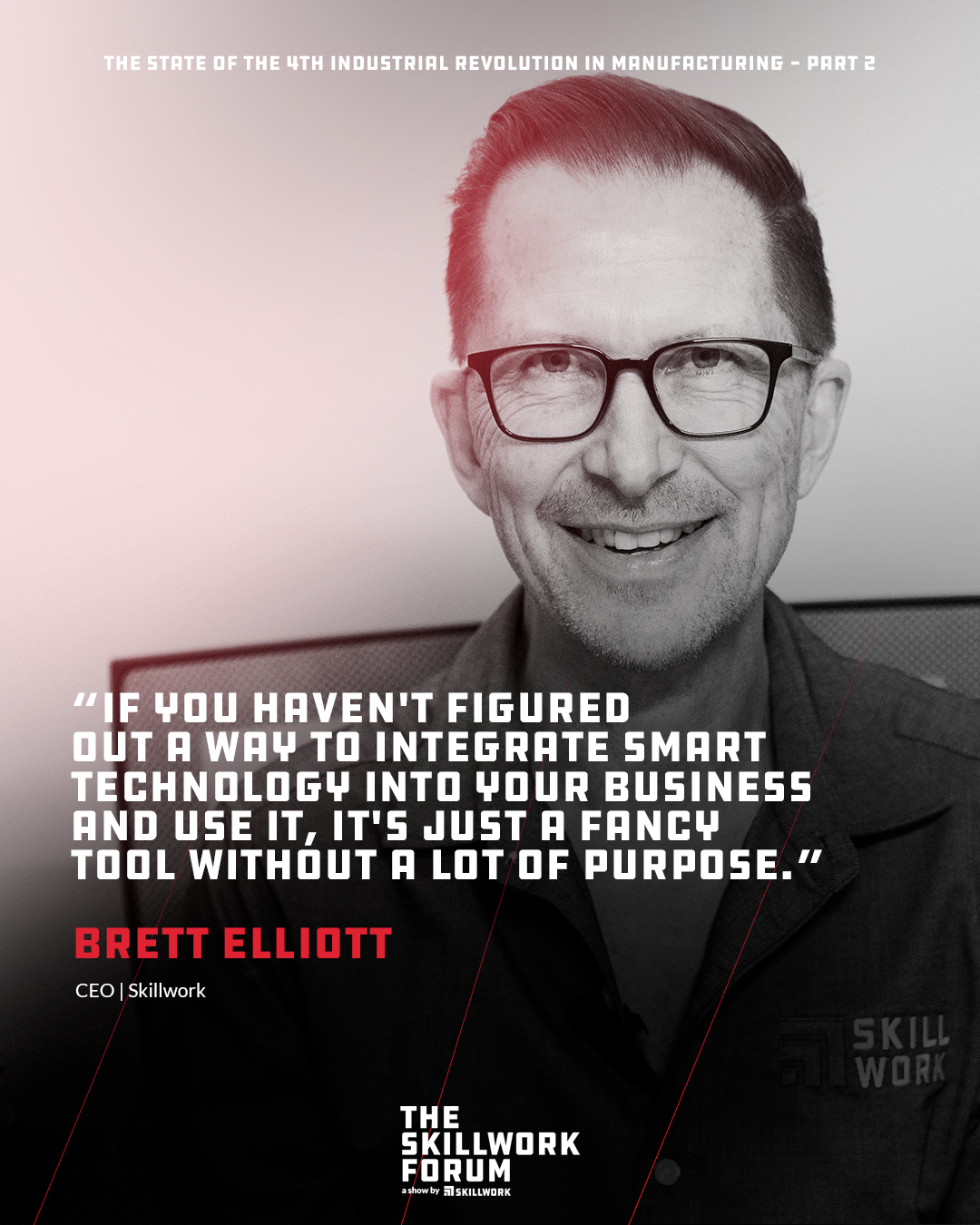
How to Respond to the Fourth Industrial Revolution
- Identify your stakeholders’ needs. Who are the people that will be using and benefiting from these technological investments (e.g., customers, frontline production workers)? Next, what do they really need? Are you trying to overcome specific challenges or just buy something new? Get the requirements upfront.
- Build a business case. Once you establish that this investment is something that can help you solve a problem, what’s the business case? What ROI are you expecting to get out of this change?
- Do your research. Don't necessarily take the first recommendation from your data provider or solutions integrator; look at what's out there. Do your homework. Select the best solution for your particular requirements and business objectives not just for today but the future.
- Design and deploy the solution. This is where using technology before you put technology in place can really help. Virtual simulations are a great way to assess whether new technology is going to deliver what you think it is before putting it on the floor. Then get a partner that can help you implement it.
- Manage the change. Change management is a sociological and psychological process. To get people on board, you need change champions who support and will help facilitate the change. Don’t overlook the importance of change management in manufacturing.
So, those are the five steps Rockwell recommends for how to respond to the Fourth Industrial Revolution: (1) Identify your stakeholders’ needs, (2) build a business case, (3) research different solutions, (4) design and deploy the solutions with a partner, and (5) manage the change. Finally, measure the results and drive adoption throughout the implementation process.
Hire the Next Generation of Skilled Workers
Today, manufacturers view technology as a significant competitive advantage for improving quality, agility, innovation, mitigating risk, and attracting the next generation of talent. Making your facility more technologically advanced makes it more attractive to Gen Z and Millennials. They're not very excited if they walk into a manufacturing plant that’s old, labor-intensive, dusty, dirty, noisy, etc.
As a manufacturing powerhouse, the U.S. has been in a bit of a decline. But if we embrace these advancements, the U.S. has the potential to take back the top of the rung, improving our economy. It's going to increase our manufacturing output and hopefully bring more manufacturing back here to the States.
In closing, we encourage you to go as fast as you can, but no faster.
As you adopt new technology, you'll need help building an advanced skilled workforce—that's where we come into play. Skillwork is America’s premier skilled trades staffing agency. We follow the best selection process for hiring qualified, skilled workers so that you can focus on day-to-day production, leaving the recruiting to us.
Contact us to schedule an obligation-free consult call with one of our skilled trades recruiters.

